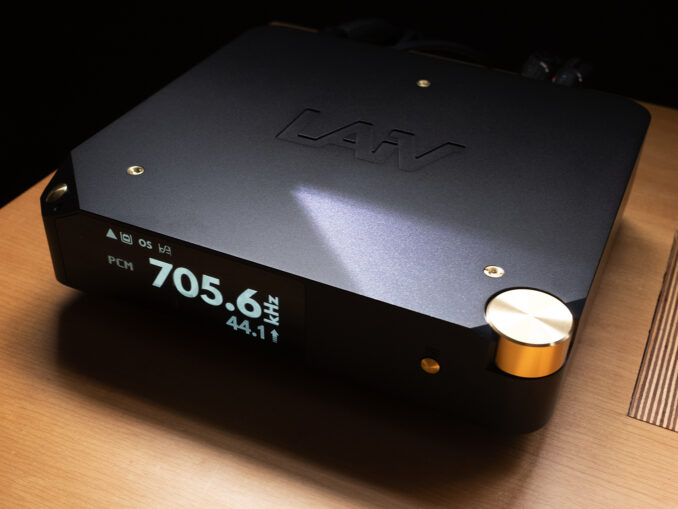
NOS or OS, the audiophile’s choice.
The Laiv Harmony DAC arrived in Barn back in April and it’s been converting away most days ever since. And one trick the Harmony DAC has up its bits is you can switch between two modes—OS (oversampling) or NOS (non-oversampling)—when converting digital to analog. Now some people will tell you they can only listen to NOS DACs, while others will tell you they can never listen to NOS DACs, as if listening to music on the hifi can trigger an allergic reaction worse than anaphylaxis! It seems the deeper we dive, the more susceptible we are to histrionics. Must have something to do with pressure.

The surprise, of sorts, that came about fairly early on when listening through the Harmony DAC was I found I preferred OS mode over NOS by a wide margin. Surprising, perhaps, because my main squeeze of a DAC is the Barn resident totaldac d1-unity which is a non-oversampling R2R DAC, and we all know that if you like an NOS DAC, you can’t possibly enjoy an OS DAC (cough).
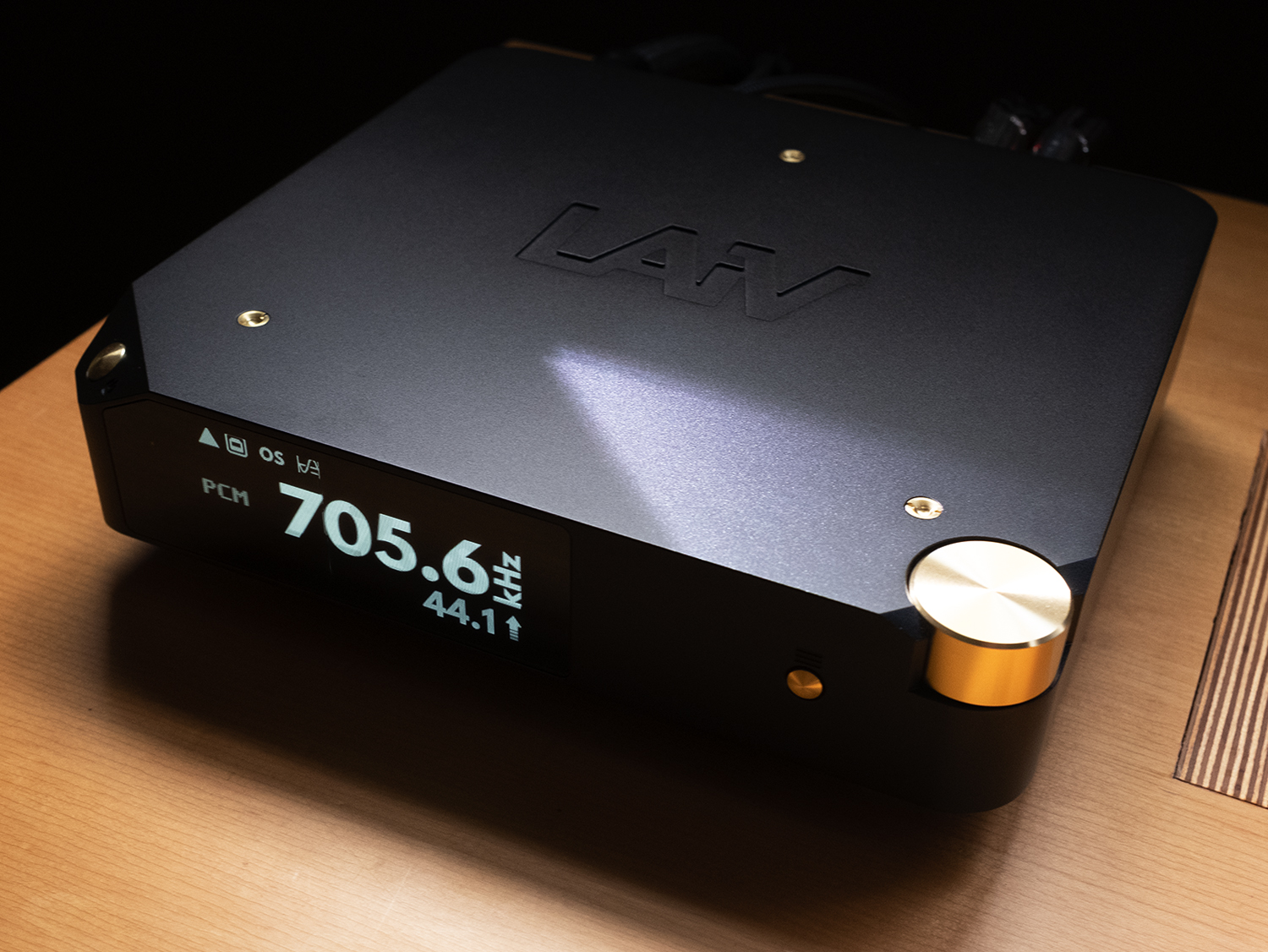
Here’s the main thing that makes me like/love a DAC—when it makes me want to listen to music because it connects me deeply.
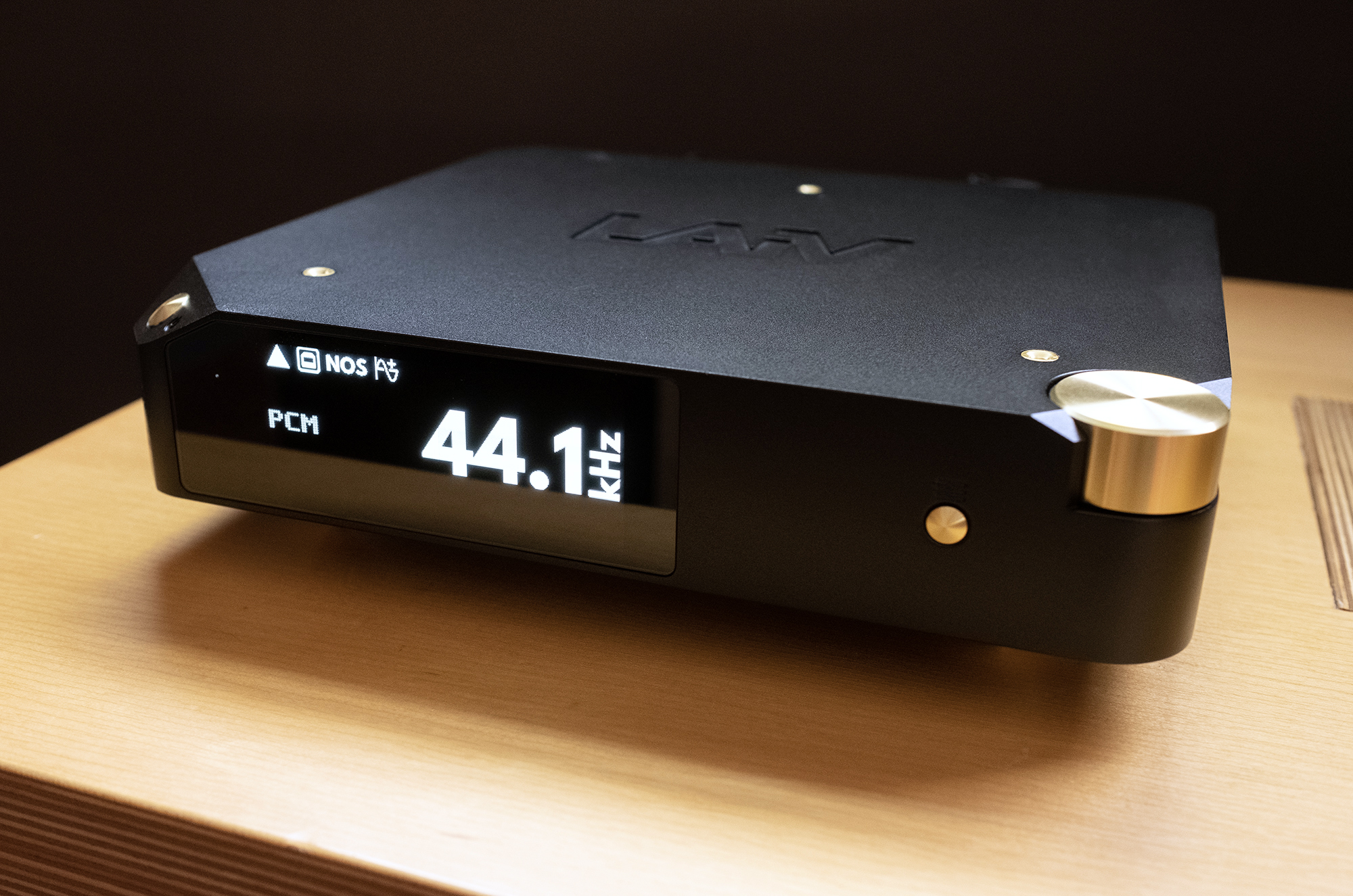
In NOS mode, the Harmony DAC made the things that make up music sound a bit too rounded off, a bit too soft, and a bit too warm and fuzzy as compared to OS mode that tightened everything up, made highs sparkle more brightly, and made all of the music I played feel more jazzy. Or to put it in shorter hand, NOS mode was kinda boring, while OS mode was kinda exciting. I will also share that I typically don’t spend a heck of a lot of time talking about options in a DAC because they’re options available to every owner and someone out there may already be typing an angry response because they own a Harmony DAC and love, and I mean LOVE, NOS mode. Dammit!
All to say the Laiv Harmony DAC spent the majority of its Barn time, darn near 3 months worth of time, in OS mode. Accompanying equipment included the Barn resident Aurlaic ARIES G1.1 streamer (review) that fed the Harmony DAC through a length of AudioQuest Carbon USB cable, the Barn resident Leben CS600x integrated amp, the review Unison Unico 90 integrated amp (more info), the Barn resident DeVore O/96 (review), and the review Audiovector QR 7 SE Loudspeakers (more info). Everything was wired up with AudioQuest cables, while the gear sat on my Box Furniture custom rack (full system and Barn details).
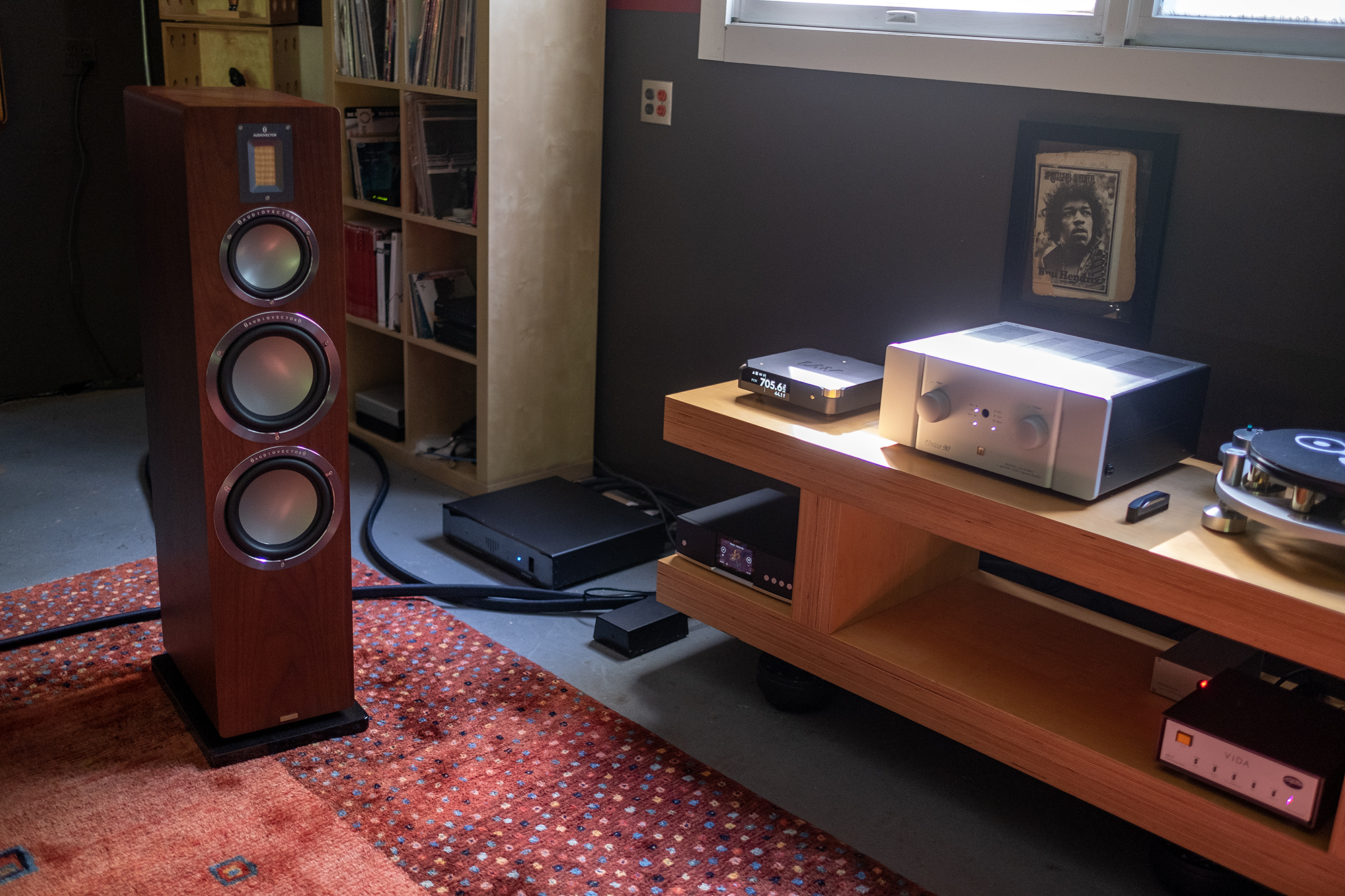
For comparisons, I used the recently arrived Linear Tube Audio (LTA) Aero DAC (more info), a non-oversampling R2R ladder DAC with a tube output stage, and the aforementioned totaldac d1-unity (review) even though it costs a heck of a lot more than the Harmony (about 4.5x more). Every DAC went through the same Auralic ARIES G1.1 and the Aero used the same AQ Carbon USB cable to receive the bits.
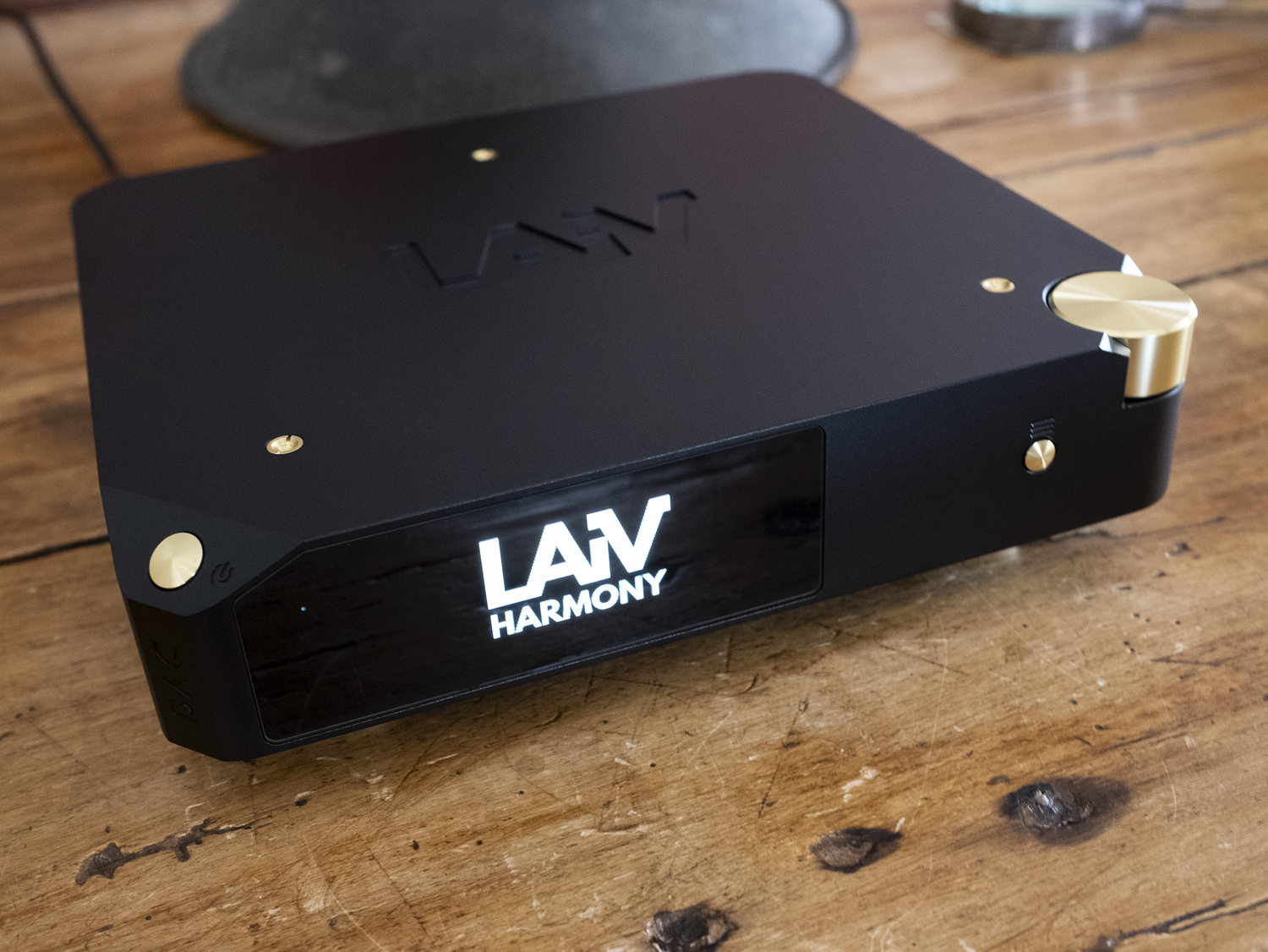
The discrete Harmony DAC relies on an Intel Altera Cyclone FPGA to control the D to A conversion performed by a network of resistors with a tolerance of 0.05%. Thus its R2R status.
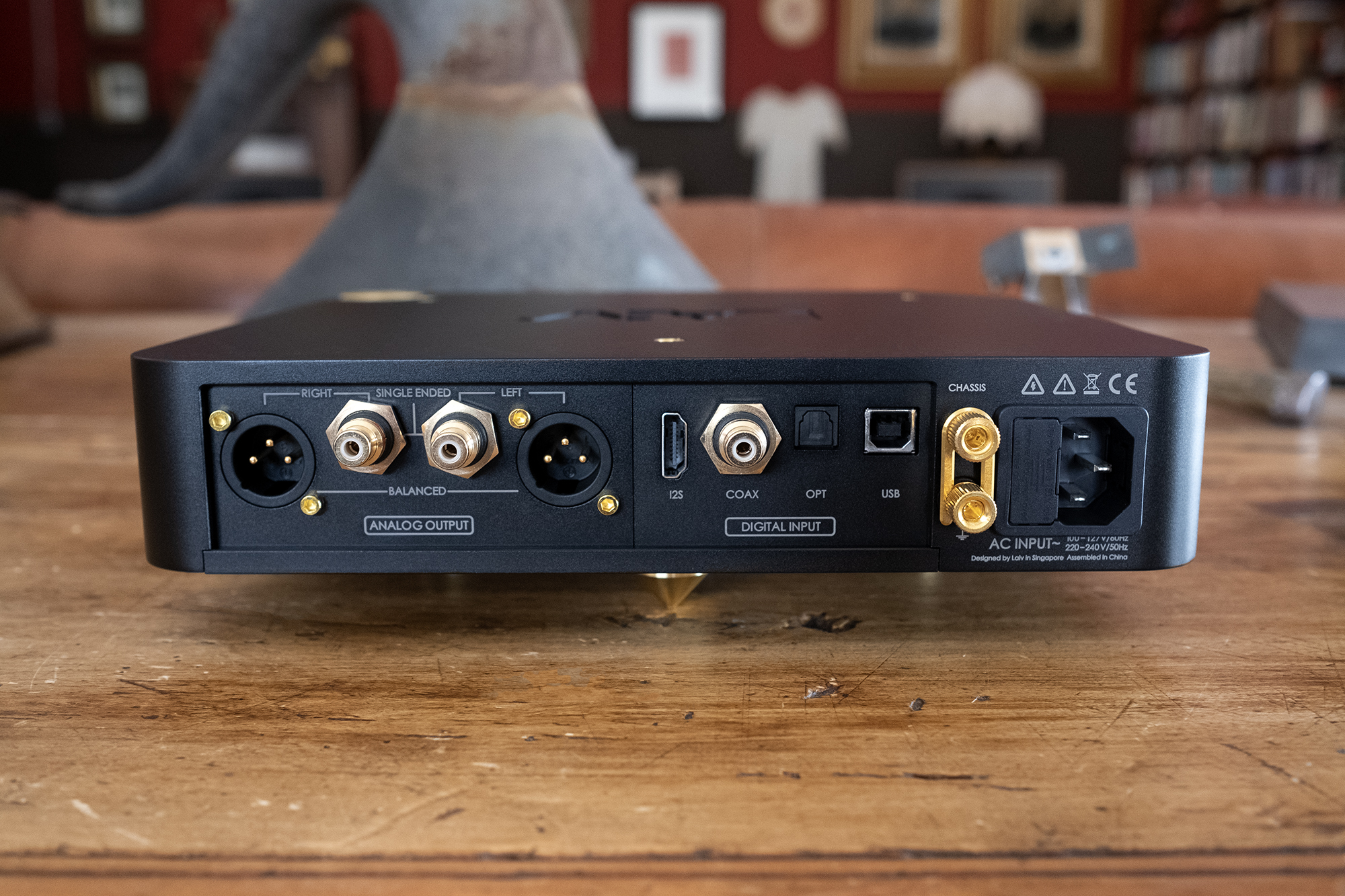
The business end of the harmony DAC offers most of the usual inputs including USB, Optical, and Coax, as well as I2S along with single-ended RCA and balanced XLR analog outputs. That I2S input will “automatically sync to the most suitable I2S mode,” currently a feature only available for Laiv’s product line, and you can choose between the DAC’s internal clock or an external clock when using the same I2S input. The Harmony DAC also houses some fancy components including a Crystek crystal for clocking, Audio Node Kaisei capacitors, and Rubycon ZLH capacitors.
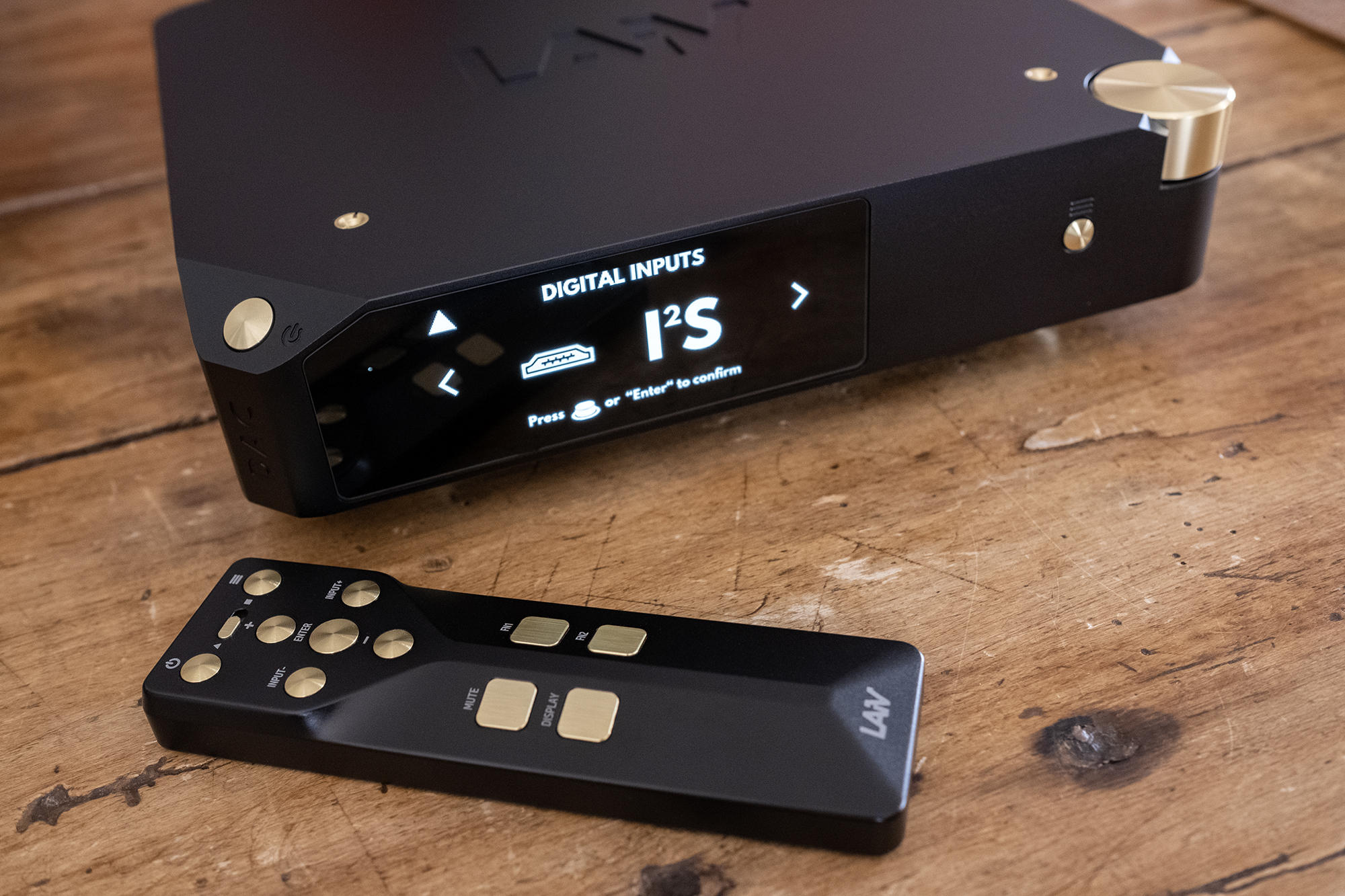
Harmony’s front face offers a 3.83-inch diagonal white monochrome OLED display that shows the selected input, Phase, operating mode (NOS or OS), incoming file format (PCM or DSD), input sampling rate and for OS mode the outgoing sample rate. Speaking of fancy, that round gold dial sitting on the front right corner controls input selection and along with the gold menu button that allows you to step through the Harmony’s menu settings including NOS/OS mode and Phase.
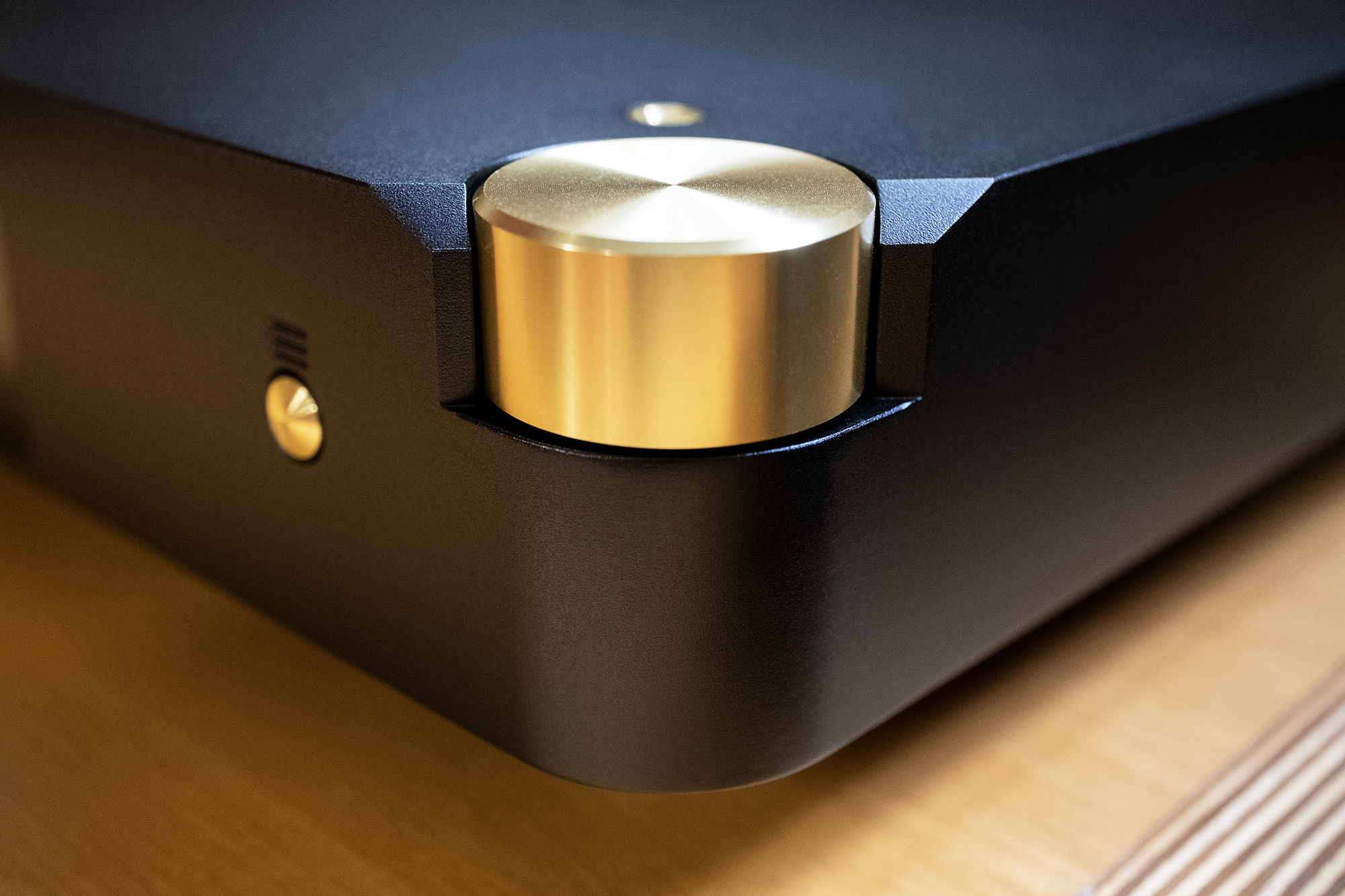
As I hope you can see from the photos, the Harmony DAC, with a chassis machined from a solid slab of aluminum weighing in at about 9.8 lbs, is built to a very high standard that I’d say is higher than you’d expect considering its $2700 asking price. The included remote is also aluminum-slab heavy and puts to shame every plastic remote on the planet, if you prefer a heavy metal remote to a featherweight piece of plastic. I had to keep reminding myself of that asking price throughout the review period because the Harmony DAC also sounds like it costs more.
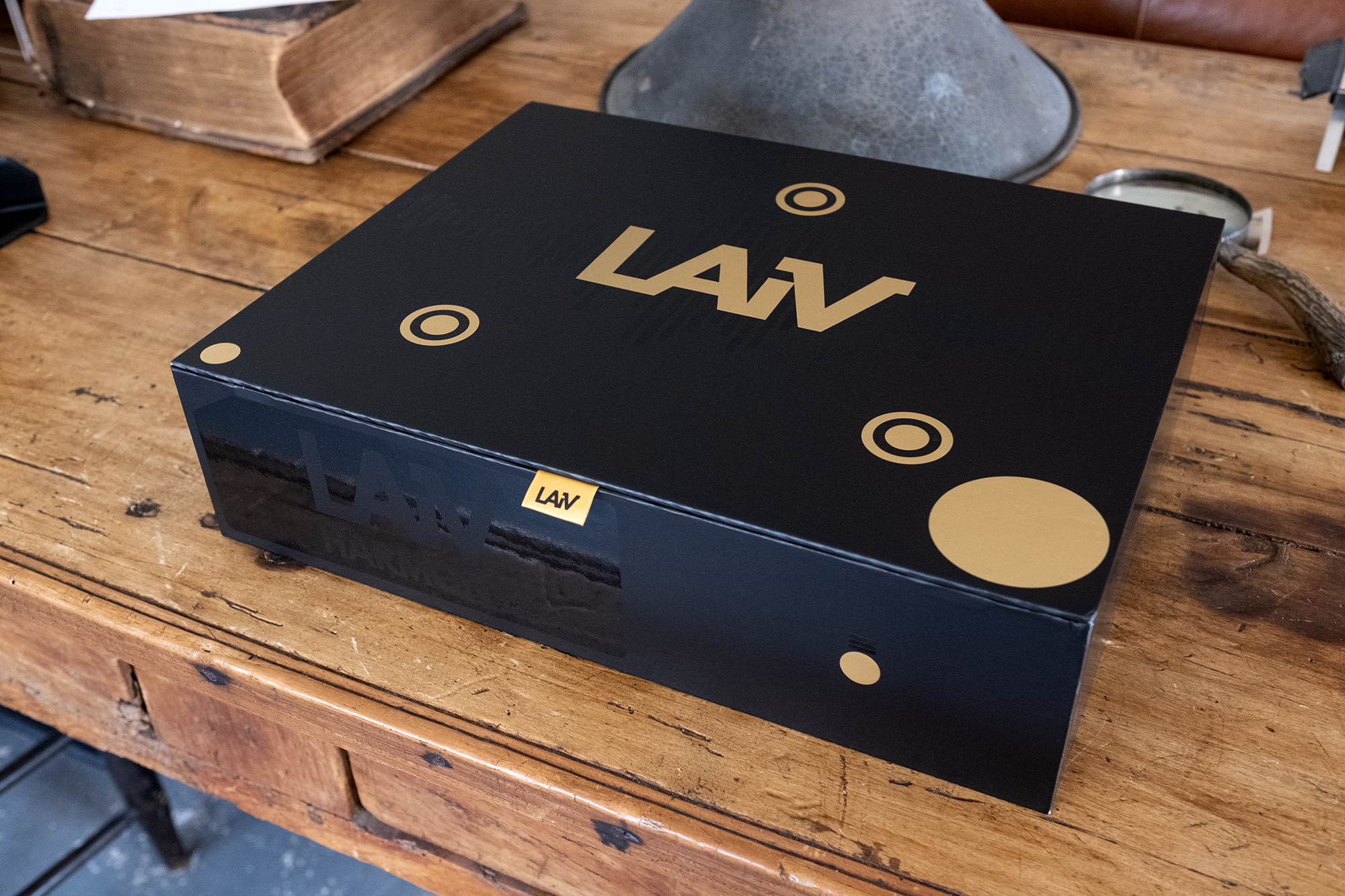
Laiv (pronounced ‘live’) was founded in 2023 and is based in Singapore. My contact at Laiv, Weng Fai Hoh, one of the company’s founders, used to work with Singapore’s Vinshine Audio, best known for selling Denafrips DACs. It’s a small world after all.
Boris’ Dear from 2017 is a big, beautiful ball of sonic fuzz, a big heavy wall of sound that is superbly sonically Boris (they sell effects pedals). With the Unison/Audiovector combo in play and the Harmony DAC converting away in NOS mode, Dear sounded big, appropriately fuzz-filled, heavy and alive with energy from top to bottom. Forceful, even, especially so at higher than normal volume levels which is the only level to listen to Boris.
The sound image was also nicely separate from the Audiovectors, something that speaks to things like speaker setup and associated gear as much as it does to the Harmony DAC but I mention this up front in the listening notes because this is an area where the Harmony fell shy of the competition at hand and it only came to light—or highlight—through direct comparisons with the totaldac and Aero DAC over time.
Let’s start with the most dramatic and most costly alternative, the totaldac d1-unity which, in comparative terms, exploded the sound image in every way as compared to the Harmony DAC, making music sound completely and totally free from its hifi constraints, imbued with its own sense of space, density, and rich as rich can feel color. I’m talking about a dramatic, slap you in the face difference that one would hope comes along with a DAC costing roughly $12.5k.
Dialing difference and prices down a bit, the LTA Aero DAC ($3950) also sounded comparatively richer, fuller, and to my ears and tastes more involving, making music feel more life-like and less processed. The Harmony DAC, running in OS mode, does have a hint of processing it imparts on the sound of music, a kind of subtly overly hyped sense of resolution that can make music feel exciting but over time had me feeling a tad fatigued, as if I had to pay extra special attention to every last bit of every last converted bit of sound that went into the making of the music in play. Switching to NOS mode did smooth this overhyped sound out, moving the sonic emphasis to a richer, fatter, less etched presentation but over time NOS mode felt a bit boring, to be blunt. Switching between NOS and OS modes throughout the course of the review period had me wishing for something in between.
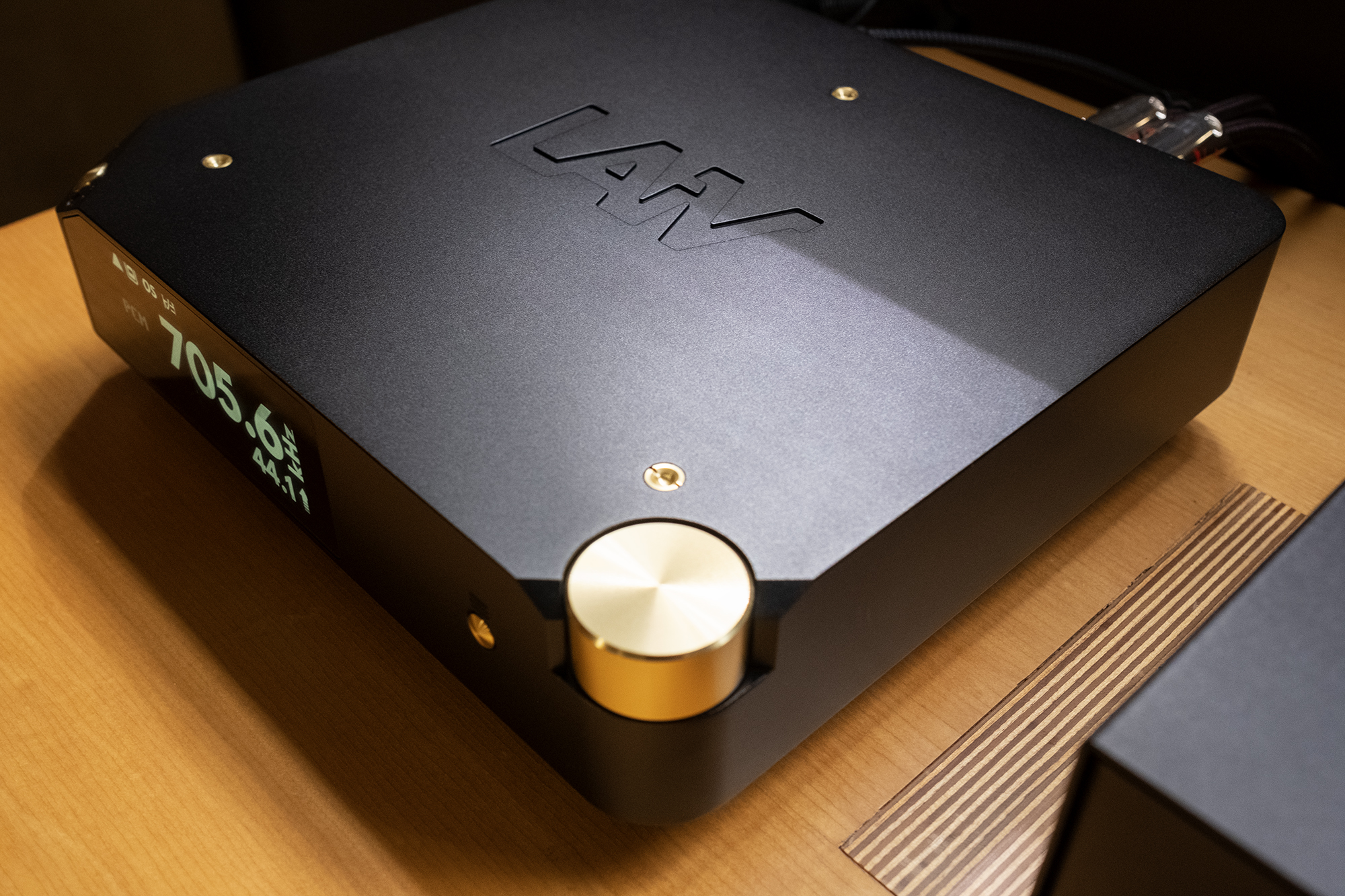
Before we move on, I will note that I am being hyper-critical of the Harmony DAC’s performance and have made what are unfair comparisons to more expensive DACs because—and this is a very important because—the Laiv Harmony DAC plays music at a level that makes its asking price of $2700 seem nearly too good to be true.
I only recently tripped over Brooklyn-based LEYA and their album Flood Dream from 2020, a Nico-esque delicate as a spider’s web of a record. This is the kind of music that highlights the Harmony DAC’s strengths as it brings harpist Marilu Donovan and violinist Adam Markiewicz into lovely in-room focus with delicate, intricate precision when run in OS mode. This mostly acoustic and quirky music resounded in Barn with a real sense of life glinting off plucked detuned Harp strings and bowed violin combined with dreamy vocals forming an eerie whole. The Harmony DAC really excels at fine-grained resolution that shines with this kind of delicate, intricate music. Lovely.
Jessica Pratt’s new record Here in the Pitch continues to entrance with its lovely 1960’s otherness. This is moody music that’s as much pop as it is folk. Like I said, a ‘60s kinda sound. Here in the Pitch is also produced and mixed with subtle accompaniment off in the distance as if Pratt wandered through some exotic club strumming and singing, inspiring the house band to join in backing fashion. Pratt’s voice is distinct and character-rich and the Harmony DAC did a wonderful job of recreating all of this mood, all of this lovely bossa strangeness in Barn. The overly-hyped sound I complained about above did not interfere with my enjoyment in any way and I found myself swaying to tropical breezes that blow through Here in the Pitch.
Perhaps my criticisms of the Harmony DAC are largely ‘reviewer problems’ in that they only come to light over time after long periods of listening and were highlighted through comparisons with more expensive DACs. Yea, that sounds a lot like reviewer problems unless you also spend a lot of time listening to music and have heard DACs that cost more than the Laiv Harmony DAC. And I do mean DACs that cost more because I haven’t heard a DAC at or under its price that offers this level of performance.
Anenon is the solo studio and live project of Brian Allen Simon, a multi-instrumentalist who blends Tenor Saxophone, Bass Clarinet, Piano, and Field Recordings on Moons Melt Milk Light into embodied loveliness. The space, the place of the recording is also part of the composition as time, reflected through reverb decaying into silence, is also part of the story. The Harmony DAC captured the sounds, space, and feel of Moons Melt Milk Light, recreating its loveliness in Barn through the DeVore O/96 driven by the Leben CS600x. Again, I was not distracted by some sense of too much resolution until I switched to the LTA Aero DAC that immediately created a more spacious and airy sense of place, with more fully voiced piano, sax, and clarinet rounding within it.
And I keep getting back to comparisons to highlight two things—the Harmony DAC is a very accomplished DAC whose shortcomings are largely only realized over extensive listening time and through comparisons with more expensive DACs. And this is mighty high praise in my book, albeit a bit double-edged.
Bar Italia’s Tracey Denim from 2023 remains enticing for all its lo-fi sound & (bad) attitude. This record’s skeletal sound, truly lo-fi in terms of sound quality, had me reaching for NOS on the Harmony DAC for that mode’s softer, fatter feel that was a clear plus on Tracey Denim. While I am in no way a fan of shifting modes, tweaking sound to taste on an album-by-album basis, some listeners may view this option in the Harmony DAC as a big plus, allowing for an on-the-fly filter of sorts, bringing music into sharper (OS) or fuzzier (NOS) focus. I’m more of a set it and forget it type and found myself wishing for that Goldilocks setting somewhere in between.
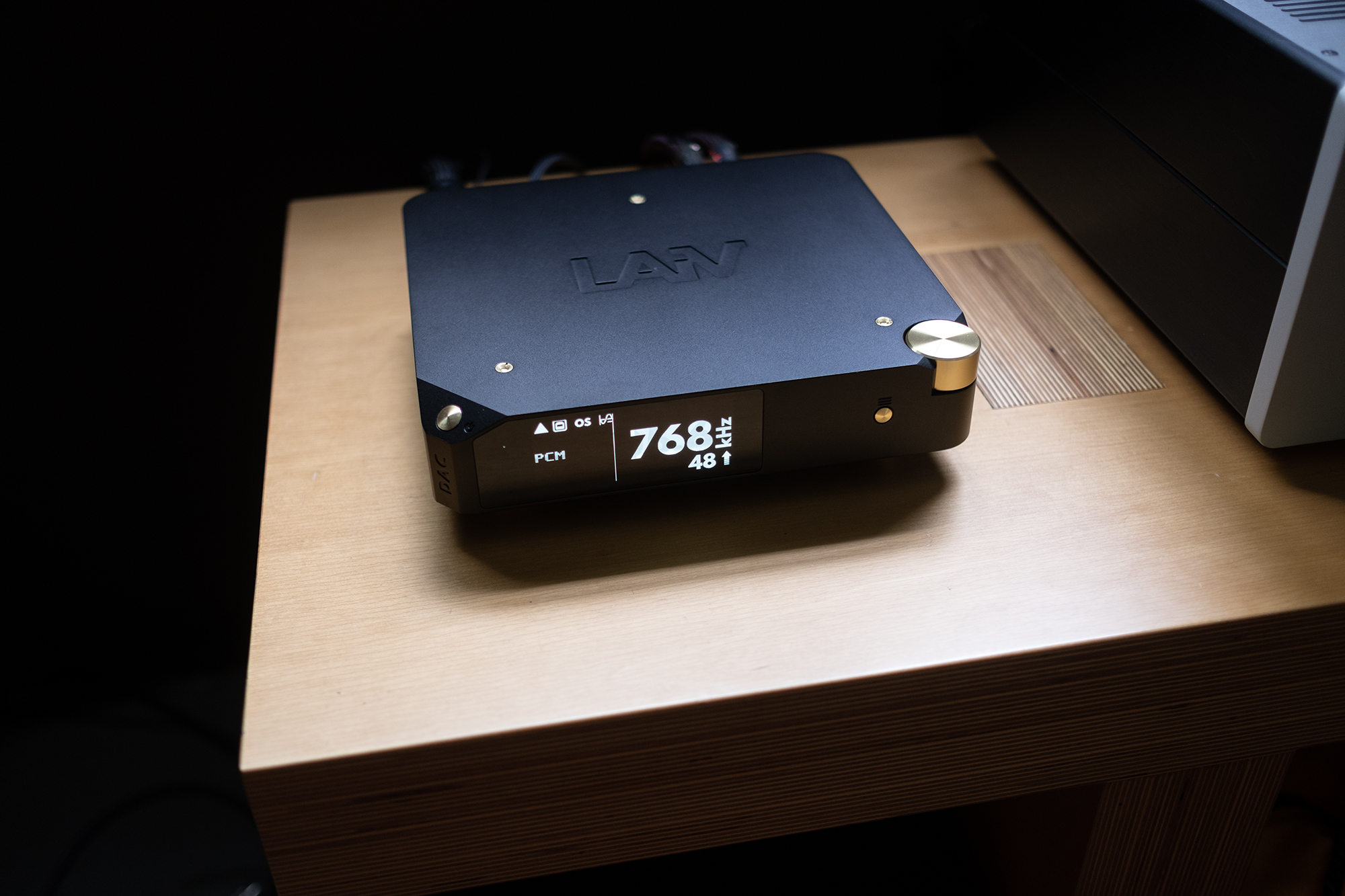
I admit this review found me in my most pronounced Jekyll and Hyde mode, alternating between high praise and sharp criticism, in part because that’s my job. Or so it seems to me. The Laiv Harmony DAC offers exceptional performance and build quality and I don’t know of any real competition anywhere near its price. To put it another way, if you want a better DAC than the Harmony, be prepared to spend more.
Laiv Harmony DAC
Price: $2700
Company Website: LAIV
Specifications
Chip: Intel® Altera® Cyclone® FPGA
Digital Inputs: 1x USB, 1x Optical, 1x Coaxial, 1x I2S
Clock: CCHD-957 FEMTO Clock Ultra-Low Phase Noise Oscillator
Supported Formats (Input dependent):
USB: PCM: 44.1kHz – 768kHz | DSD: DSD64 – DSD256
Optical: PCM: 44.1kHz – 192kHz | DSD: Not supported
Coaxial PCM: 44.1kHz – 192kHz | DSD: Not supported
I2S: PCM: 44.1kHz – 768kHz | DSD: DSD64 – DSD256
Analogue Outputs: 1 x XLR, maximum at 4.15Vrms, approx. 1200 Ω | 1 x RCA, maximum at 2.07Vrms, approx. 600 Ω
Frequency Response: 20Hz – 20kHz, within ± 0.25 dB
THD+N: 0.0035%
Crosstalk: Better than 110 dB, 20Hz – 20kHz
Signal to Noise Ratio (SNR): Better than 123dB, A-Wt.
Dynamic Range: Better than 110dB, A-Wt.
Features
Modular design
NOS / OS Mode
Positive / negative phase
Function key for quick settings
Display brightness, delay dim, and delay off
8 x I2S Mode with Laiv product auto-configured
I2S clock supported
CD track info over SPDIF
Dimensions (W x H x D): 255mm x 50mm x 250mm (including connectors)
Display: 3.83-inch (diagonal) white monochrome OLED display | 320×132-pixel resolution at 16-bit grayscale
Power: 100 – 127 VAC / 220 – 240 VAC, 50 / 60Hz, ≤ 10W
Fuse: 2A, Slow-blow, 5 x 20mm.
In the Box:
Welcome card with Certificate of Authenticity
Harmony DAC
Three spike shoes with alignment card
Remote control (Battery CR2032 not included)
Power cord
Cleaning cloth
Warranty: 24-month limited warranty.

